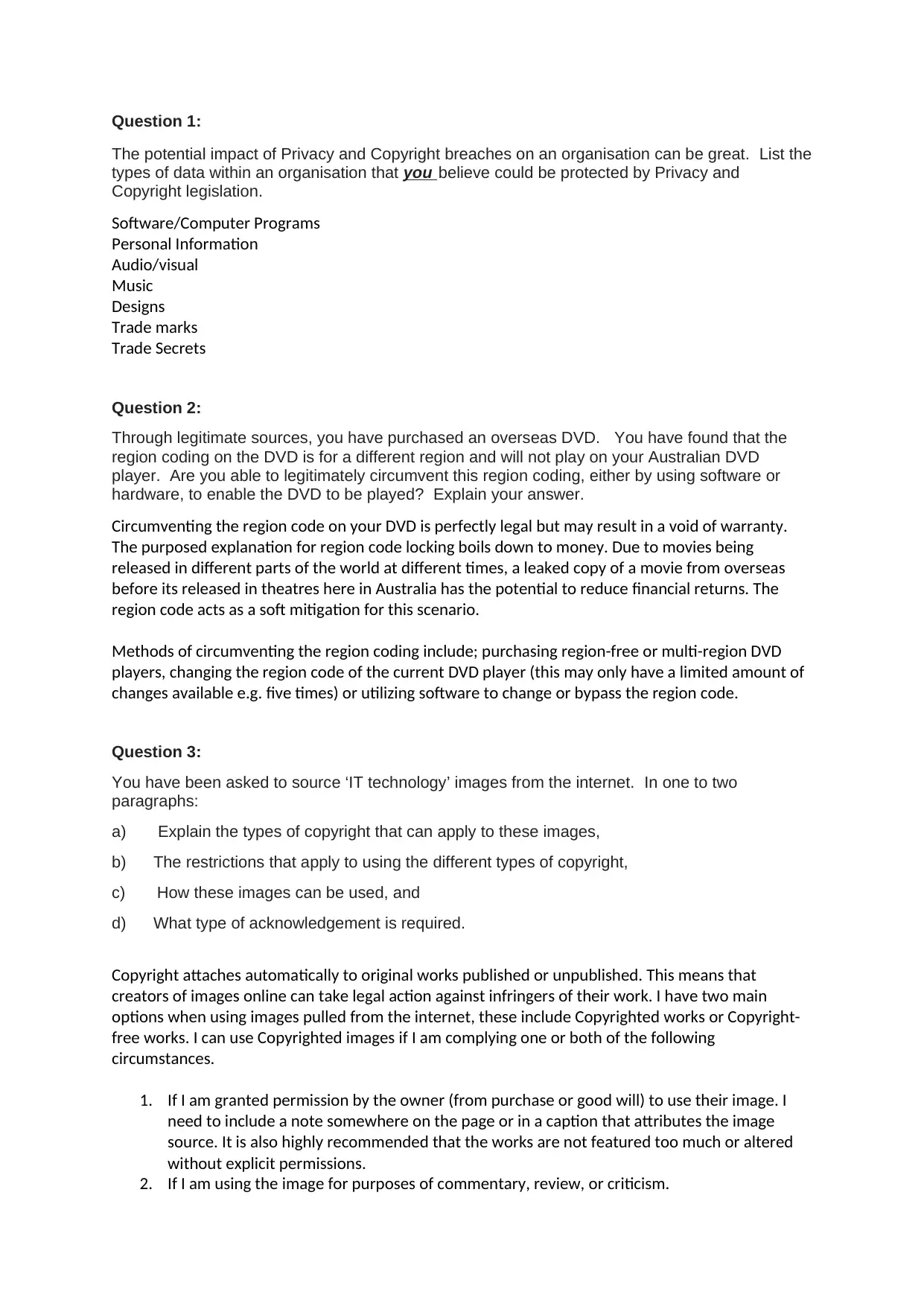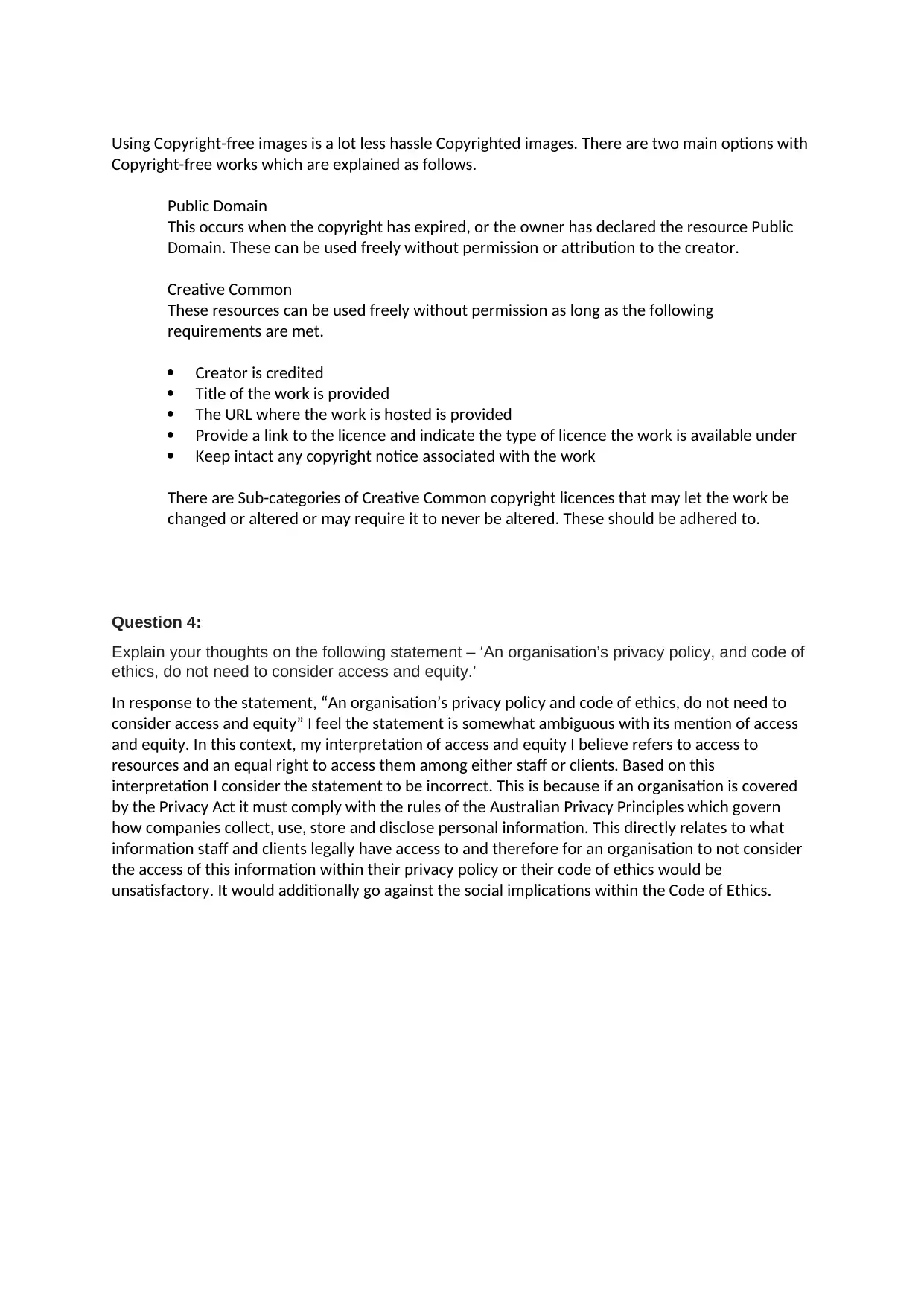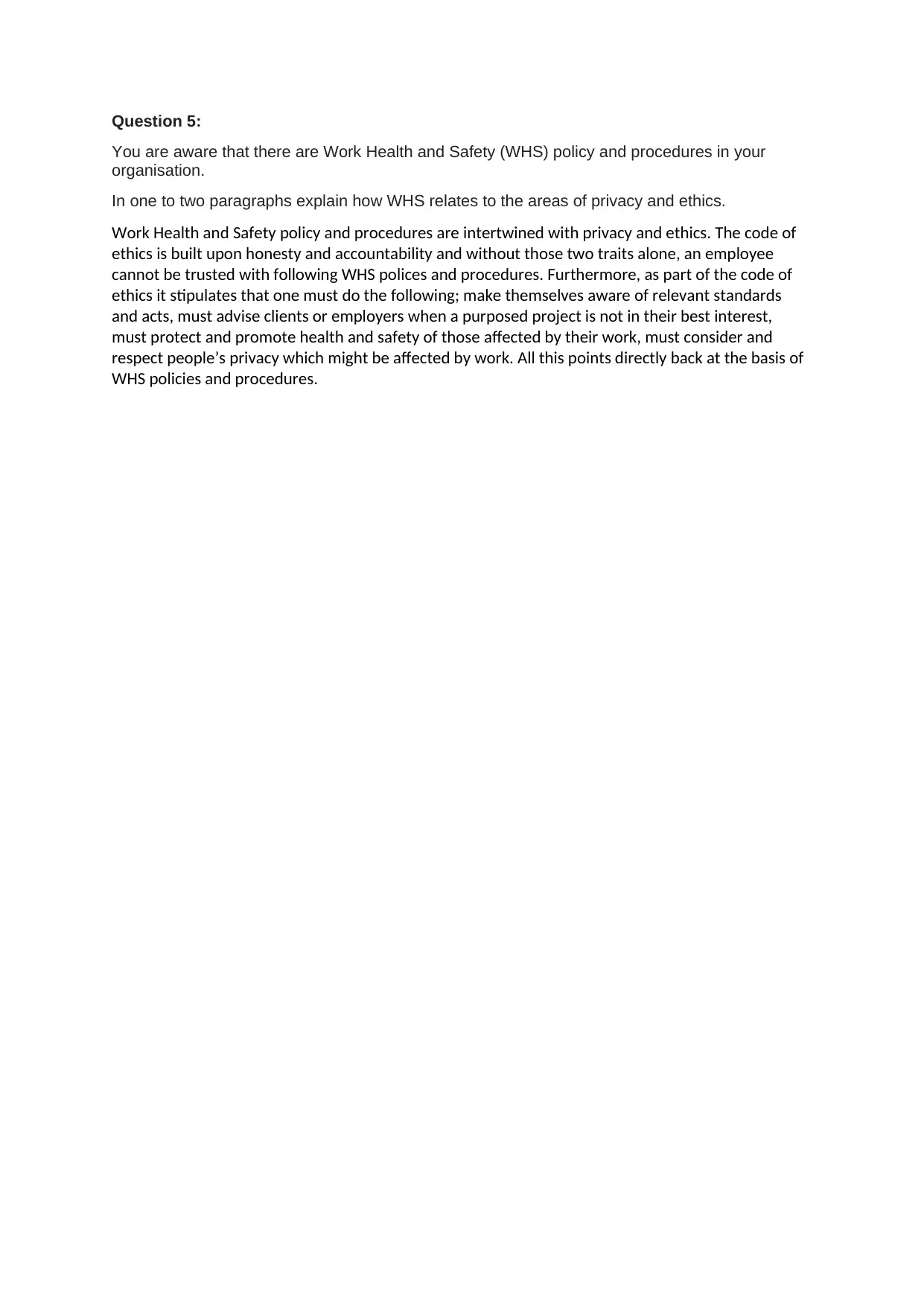Assessment of Privacy, Copyright, Ethics, and WHS in IT Context
VerifiedAdded on 2020/11/02
|3
|991
|108
Homework Assignment
AI Summary
This assignment addresses key aspects of IT law, covering privacy and copyright issues within an organizational context. It begins by identifying types of data protected by privacy and copyright legislation, followed by an analysis of the legality of circumventing region coding on DVDs. The assignment then delves into copyright considerations for sourcing IT images from the internet, including different types of copyright, usage restrictions, and required acknowledgements. Further, the assignment explores the relationship between an organization's privacy policy, code of ethics, and the concepts of access and equity. Finally, it examines the intersection of Work Health and Safety (WHS) policies and procedures with privacy and ethics. The provided solution offers comprehensive answers to each question, providing insights into legal and ethical considerations relevant to IT professionals and organizations. This assignment helps students understand the importance of protecting data, respecting intellectual property, and adhering to ethical guidelines in the IT industry.
1 out of 3




![Business Ethics, Copyright, and Data Privacy Homework - [Course Name]](/_next/image/?url=https%3A%2F%2Fdesklib.com%2Fmedia%2Fimages%2Fas%2Fc5df1e7d7f18453ca4be5eabf550cd70.jpg&w=256&q=75)

![[object Object]](/_next/static/media/star-bottom.7253800d.svg)